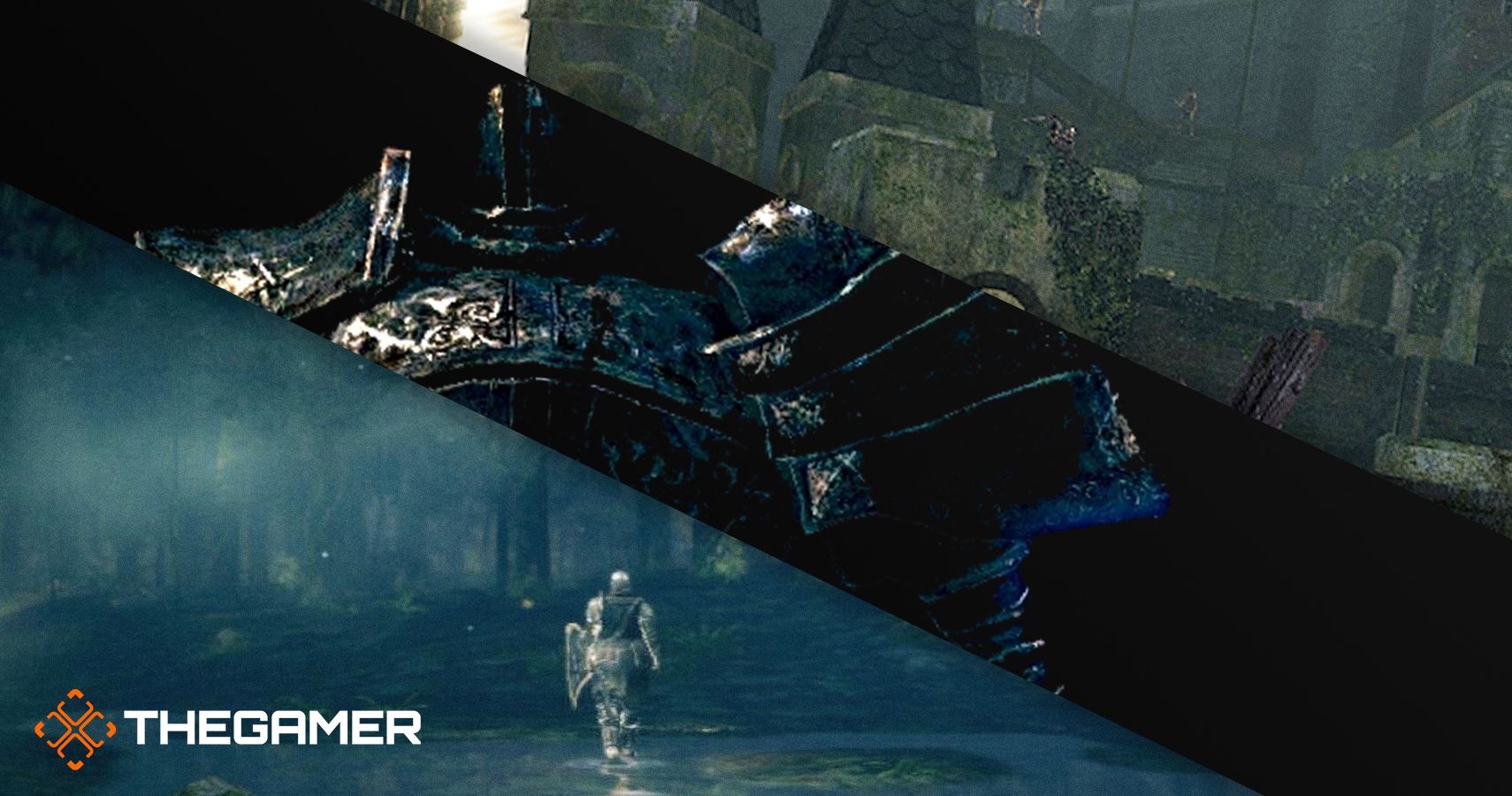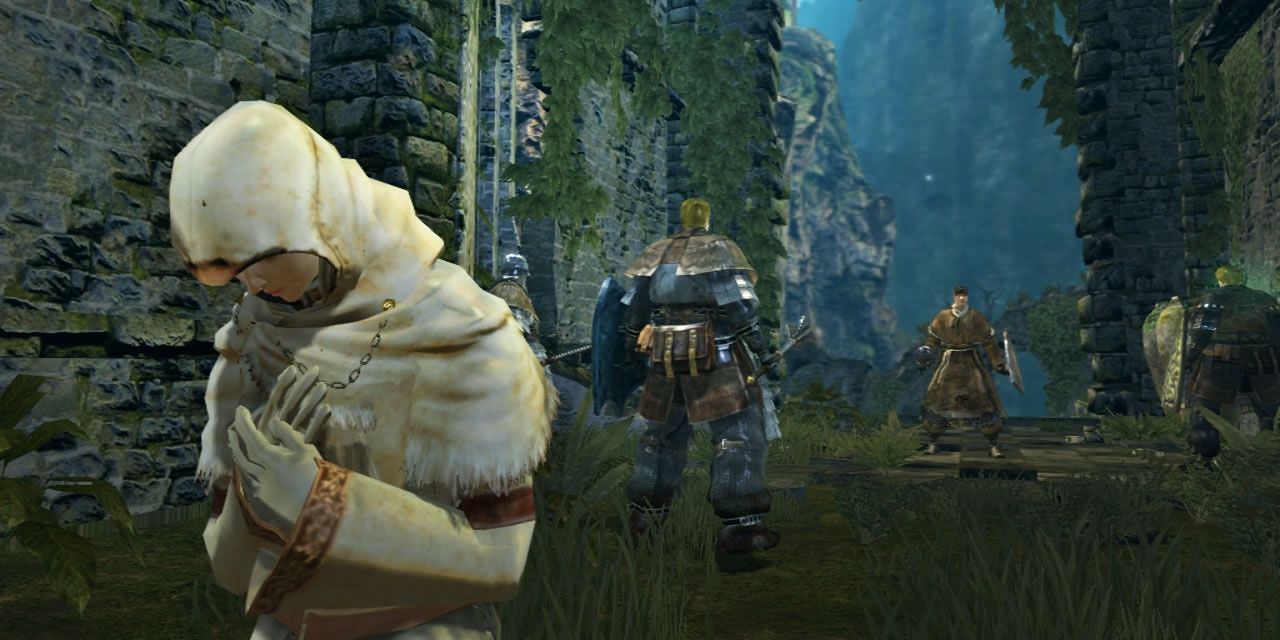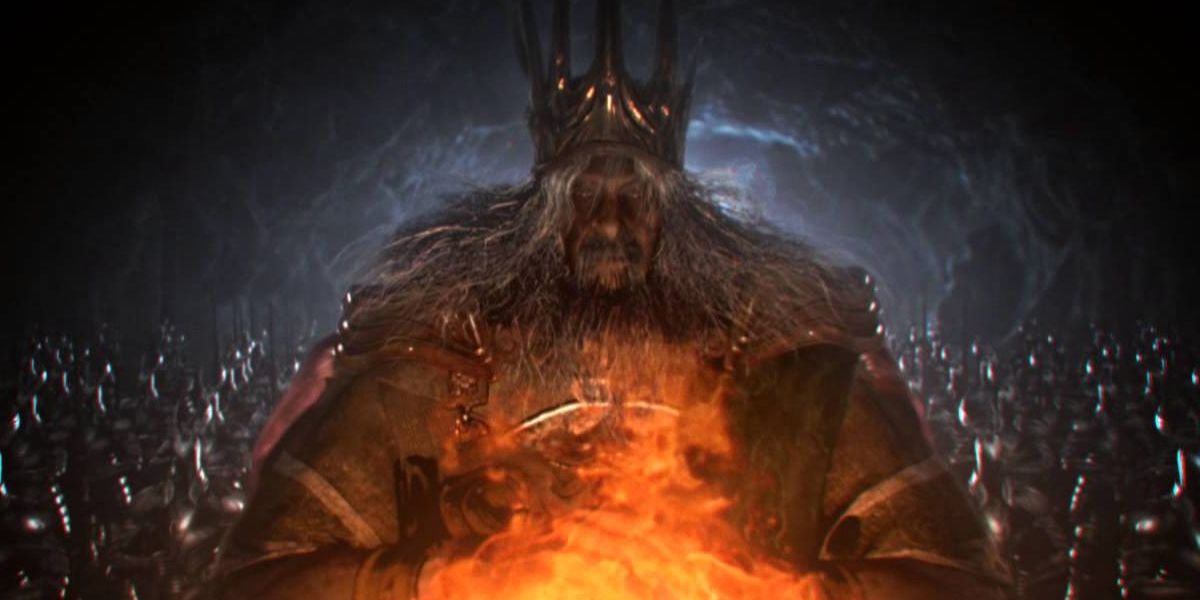Dark Souls' main selling point is its difficulty - it's slapped on the box, the series’ name has become shorthand for journalists to describe a hard game, and it's what many YouTubers hinge on with expanded challenge runs. However, the very first Dark Souls has something else that helps it stand out from its cohorts and that is the masterfully interconnected level design complimented by the lack of a fast-travel mechanic.
After you slaughter the Asylum Demon, beating the tutorial, you are plucked by Velka's crow and brought to the safety of Firelink Shrine. There, you meet the Crestfallen Warrior, a staple in any Souls game barring Bloodborne, and he puts you on the path to the aqueduct that leads to the Undead Burg, which leads directly into the Parish where the Gargoyles reside.
You can listen to the Crestfallen Warrior and take the intended path that level design cues lead you down - the easy road. Or, if you so choose, you can brave the Catacombs by pushing through Firelink Shrine's graveyard and reach Pinwheel, a necromancer boss akin to the Fool’s Idol of Demon’s Souls, who drops a random unique mask. Failing that, you can take the lift down to New Londo and, if you picked the Master Key as your starting gift, you can open a door that leads to the Darkroot Garden or Blighttown. Circling through Darkroot Garden lets you skip the first area, putting you smack bang in the Undead Parish which has an elevator leading right back down to Firelink Shrine. Or, past New Londo, there's also another route to Blighttown which, when accessed right off the bat, cuts out the Undead Burg and the Depths altogether.
That level of choice and intricacy in the way that the world connects is possible because of how tight-knit everything is. Given the lack of fast-travel, FromSoftware had to accommodate, making everything circle back in on itself, whether it's reaching the lower Undead Berg, defeating the Taurus Demon, and before venturing into the Depths, being able to access more of the aqueduct that was previously blocked off, connecting you directly to the hub once more. It makes the Depths much more frightening because the further you plunge, the further from the safety of the central hub you get - if you aren't prepared, you have to make the climb back up to remedy that. This design ethos permeates through the entire game.
It's especially evident in the aforementioned Blighttown, at least in the way you're supposed to go there. Once you've defeated the Gaping Dragon in the Depths and acquired the key, you can go even further down into Blighttown which can be seen from Firelink Shrine itself below the cliff on the edge of the graveyard. Where did that dragon crawl up from in the cutscene back in the Depths? Well, there's the big room behind the bonfire at the bottom of Blighttown's swamps. It's that far down, and so you feel more cut off than ever before as you plunge further in. This adds tension as Firelink Shrine, your sanctuary, shrinks further out of view. And the further you go, the enemies get tougher and the environments more treacherous.
Because of the open-ended level design, however, there’s always better armor, better weapons, and better items available if you trek off in a different direction, and this is true right from the start. Experienced players will brave the toughest areas on a suicide run to scoop up items that make the rest of the adventure easier to manage - going straight to Darkroot Garden nets you a chance of getting an early-game Black Knight’s weapon, and they are notoriously powerful, or you can go for the guaranteed Great Scythe of the Catacombs. You’re rewarded for replays, adding value to each run.
Unfortunately, this interconnectivity doesn’t extend to the entire game. In Dark Souls, for the uninitiated, there are four key bosses that must be defeated in order to unlock the final battle against Gwyn. One is located in New Londo below the hub, one is past Blighttown in Izalith, one is past the Catacombs in the Tomb of the Giants, and one is found to the left of Anor Londo in the Duke's Archives. Anor Londo is reached by venturing into Sen's Fortress where, at the top, upon beating the Iron Golem, the demons will grab you and fly you up to the pearly gates of the beguiling city. It's here, in Anor Londo, that you get access to fast-travel, and at that point, the levels become more spread out - locations you’ve previously visited becoming distant, unreachable landmarks. You can see Izalith from the Tomb of the Giants, illuminating a small part of its dark, dreary, and drab caverns.
That's what Dark Souls excels at - the world is convincing because everything is so close together and the parts that are distant feel earned when reached, even if getting to those points cuts off the safety line of knowing your surroundings or knowing that you're close to the warm, cozy hub with all the friends you've made along the way.
Other Souls games, in comparison, tend to be far more linear, with levels pushing from A to B to C to D with little backtracking. This is likely due to having fast-travel from the get-go, but in-level connectivity is definitely present in Dark Souls 3, and there are small snippets in Bloodborne, with elements of choice being available in Dark Souls 2. However, the original Dark Souls embraced it more cohesively. The other games are stretched forward and backward, but Dark Souls is vertical, and being pushed further up, to take in the scale, or further down, into the dark, is what makes it so engaging.
Firelink Shrine feels like a true hub, in a way that many others don't, because all the paths and locations are like roots spiraling out of it, leading the way to new areas that ultimately entangle and wrap around themselves. You don't find shortcuts in Dark Souls, you find how one area is connected to the other, and it feels tangible for it in a way that very few other games do. It's no wonder that FromSoftware and even other game developers strive to recreate this feeling.



